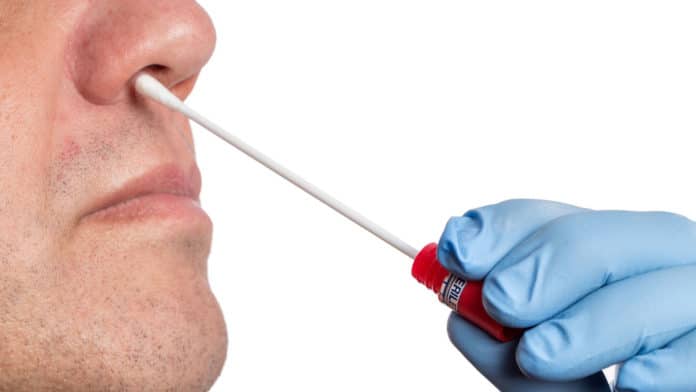A mucus is a slippery and stringy fluid substance produced by many lining tissues in the body. It is essential for bodies. Most slippery bodily fluids contain mucus. How mucus evolves is the main question scientists in this study tend to find out.
The University of Buffalo study suggests that mucins proteins, a functionally but not evolutionarily defined group of proteins, repeatedly evolve by surprisingly co-opting non-mucin proteins in mammals. These mucins have several functions. As a family, they are known as mucus, where they contribute to the substance’s gooey consistency.
Scientists compared mucin genes in 49 mammal species to propose that exonic repeats and their copy number variation contribute substantially to the de novo evolution of new gene functions. By integrating bioinformatic, phylogenetic, proteomic, and immunohistochemical approaches, they identified 15 instances in which new mucins appear to have evolved through an additive process that transformed a non-mucin protein into mucin.
Each mucinization took place with a protein that wasn’t mucin. Evolution added a new part to this non-mucin base at some time, which is made up of a short chain of amino acid building blocks that are embellished with sugar molecules. This new region gradually got duplicated, adding more copies to lengthen the protein further and make it mucin.
University at Buffalo researchers Omer Gokcumen and Stefan Ruhl, the senior authors of the study, and Petar Pajic, the first author, said, “The doubled regions, called “repeats,” are key to a mucin’s function.”
“The sugars coating these sections protrude outward like the bristles of a bottle brush, and they bestow mucins with the slimy property vital to many important tasks that these proteins carry out.”
Gokcumen said, “I don’t think it was previously known that protein function can evolve this way, from a protein gaining repeated sequences. A protein that isn’t mucin becomes mucin just by gaining repeats. This is an important way that evolution makes slime. It’s an evolutionary trick, and we now document this happening repeatedly.”
Stefan Ruhl, DDS, Ph.D., interim dean of the UB School of Dental Medicine and professor of oral biology, said, “The repeats we see in mucins are called ‘PTS repeats’ for their high content of the amino acids proline, threonine, and serine, and they aid mucins in their important biological functions that range from lubricating and protecting tissue surfaces to helping make our food slippery so that we can swallow it. Beneficial microbes have evolved to live on mucus-coated surfaces, while mucus can at the same time also act as a protective barrier and defend against disease by shielding us from unwanted pathogenic intruders.”
“Not many people know that the first mucin which had been purified and biochemically characterized came from a salivary gland. My lab has been studying mucins in saliva for the last 30 years, mostly because they protect teeth from decay and help balance the oral cavity’s microbiota.”
When scientists were studying the saliva, they found that small salivary mucin called MUC7- found in humans- is not present in mice. Instead, the mice have salivary mucin called MUC10.
Were these two proteins related from an evolutionary perspective?
No, was the response. What scientists discovered next, nevertheless, was unexpected. MUC10 did not appear to be related to MUC7, although PROL1, a protein identified in human tears, did have some structural similarities to MUC10. PROL1 looked much like MUC10, minus the sugar-coated bottlebrush repeats that make MUC10 mucin.
Gokcumen said, “We think that somehow that tear gene ends up repurposed. It gains the repeats that give it the mucin function, and it’s now abundantly expressed in mouse and rat saliva.”
The scientists wondered whether other mucins could have been generated similarly. They started looking into it and found numerous instances of the same phenomenon. The scientists identified 15 instances in which evolution appears to have transformed non-mucin proteins into mucins by the addition of PTS repeats, despite the fact that many mucins had a common ancestor among different groups of mammals.
Gokcumen said, “And this was with a pretty conservative look. The study focused on one genome region in a few dozen mammal species.”
He calls slime an “amazing life trait,” and he’s curious whether the same evolutionary mechanism might have driven the formation of some mucins in slugs, slime eels, and other critters. More research is needed to find an answer.
Pajic said, “How new gene functions evolve is still a question we are asking today. Thus, we are adding to this discourse by providing evidence of a new mechanism, where gaining repeated sequences within a gene births a novel function.”
“I think this could have even broader implications, both in understanding adaptive evolution and in possibly explaining certain disease-causing variants. If these mucins keep evolving from non-mucins repeatedly in different species at different times, it suggests some sort of adaptive pressure that makes it beneficial. And then, at the other end of the spectrum, maybe if this mechanism goes ‘off the rails’ — happening too much, or in the wrong tissue — it may lead to disease like certain cancers or mucosal illnesses.”
Journal Reference:
- Petar Pajic, Omer Gokcumen, Stefan Ruhl, et al. A mechanism of gene evolution generating mucin function. Science Advances. 26 Aug 2022. Vol 8, Issue 34. DOI: 10.1126/sciadv.abm8757
